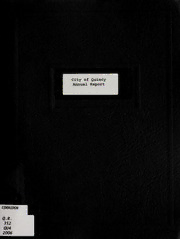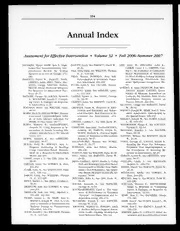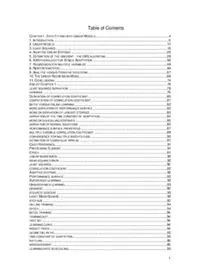
Chapter 1. Data Fitting with Linear Models PDF
Preview Chapter 1. Data Fitting with Linear Models
Table of Contents CHAPTER I - DATA FITTING WITH LINEAR MODELS.................................................................................4 1. INTRODUCTION................................................................................................................................5 2. LINEAR MODELS ............................................................................................................................11 3. LEAST SQUARES ...........................................................................................................................15 4. ADAPTIVE LINEAR SYSTEMS ..........................................................................................................20 5. ESTIMATION OF THE GRADIENT - THE LMS ALGORITHM....................................................................28 6. A METHODOLOGY FOR STABLE ADAPTATION ..................................................................................36 7. REGRESSION FOR MULTIPLE VARIABLES .........................................................................................48 8. NEWTON’S METHOD.......................................................................................................................64 9. ANALYTIC VERSUS ITERATIVE SOLUTIONS .......................................................................................67 10. THE LINEAR REGRESSION MODEL................................................................................................68 11. CONCLUSIONS ............................................................................................................................74 END OF CHAPTER 1 ..........................................................................................................................78 LEAST SQUARES DERIVATION .............................................................................................................78 VARIANCE .........................................................................................................................................79 DERIVATION OF CORRELATION COEFFICIENT .......................................................................................80 COMPUTATION OF CORRELATION COEFFICIENT....................................................................................81 BATCH VERSUS ONLINE LEARNING ......................................................................................................82 MORE DERIVATION OF PERFORMANCE SURFACE..................................................................................82 MORE ON DERIVATION OF LARGEST STEPSIZE......................................................................................83 DERIVATION OF THE TIME CONSTANT OF ADAPTATION ..........................................................................84 MORE ON SCHEDULING STEPSIZES .....................................................................................................85 DERIVATION OF NORMAL EQUATIONS ..................................................................................................85 PERFORMANCE SURFACE PROPERTIES ...............................................................................................87 MULTIPLE VARIABLE CORRELATION COEFFICIENT.................................................................................89 CONVERGENCE FOR MULTIPLE WEIGHTS CASE ....................................................................................90 ESTIMATION OF EIGENVALUE SPREAD .................................................................................................91 CASTI REFERENCE............................................................................................................................91 PROCESSING ELEMENT .....................................................................................................................91 EPOCH .............................................................................................................................................91 LINEAR REGRESSION .........................................................................................................................92 MEAN SQUARE ERROR .......................................................................................................................92 LEAST SQUARES................................................................................................................................92 CORRELATION COEFFICIENT...............................................................................................................92 ADAPTIVE SYSTEMS ..........................................................................................................................92 PERFORMANCE SURFACE ..................................................................................................................92 SUPERVISED LEARNING .....................................................................................................................93 UNSUPERVISED LEARNING.................................................................................................................93 GRADIENT .........................................................................................................................................93 STEEPEST DESCENT ..........................................................................................................................93 LEAST MEAN SQUARE .......................................................................................................................93 STEP SIZE .........................................................................................................................................93 ON-LINE TRAINING .............................................................................................................................94 EPOCH..............................................................................................................................................94 BATCH TRAINING ...............................................................................................................................94 TRAINING SET....................................................................................................................................94 TEST SET ..........................................................................................................................................94 LEARNING CURVE ..............................................................................................................................94 WEIGHT TRACK..................................................................................................................................94 GEOMETRIC RATIO.............................................................................................................................95 TIME CONSTANT OF ADAPTATION ........................................................................................................95 RATTLING..........................................................................................................................................95 MISADJUSTMENT ...............................................................................................................................95 LEARNING RATE SCHEDULING.............................................................................................................95 1 EIGENVALUE SPREAD.........................................................................................................................95 NORMALIZED LMS.............................................................................................................................95 BIG O NOTATION................................................................................................................................96 ADALINE ...........................................................................................................................................96 EQ. 4 ...............................................................................................................................................96 EQ. 14 .............................................................................................................................................96 EQ.6 ................................................................................................................................................96 EQ.9 ................................................................................................................................................97 EQ.3 ................................................................................................................................................97 EQ.10 ..............................................................................................................................................97 EQ.12 ..............................................................................................................................................97 EQ.11 ..............................................................................................................................................97 EQ.13 ..............................................................................................................................................97 EQ.54 ..............................................................................................................................................97 EQ.16 ..............................................................................................................................................98 EQ.17 ..............................................................................................................................................98 EQ.19 ..............................................................................................................................................98 EQ.25 ..............................................................................................................................................98 EQ.28 ..............................................................................................................................................98 EQ.31 ..............................................................................................................................................98 EQ.68 ..............................................................................................................................................98 EQ.69..............................................................................................................................................99 EQ.65 ..............................................................................................................................................99 EQ.27 ..............................................................................................................................................99 EQ.36 ..............................................................................................................................................99 EQ.21 ..............................................................................................................................................99 EQ.33 ..............................................................................................................................................99 EQ.32 ............................................................................................................................................100 EQ.41 ............................................................................................................................................100 EQ.5 ..............................................................................................................................................100 EQ.45 ............................................................................................................................................100 EQ.53 ............................................................................................................................................100 EQ.52 ............................................................................................................................................101 EQ.55 ............................................................................................................................................101 EQ.30 ............................................................................................................................................101 EQ.26 ............................................................................................................................................101 EQ.63 ............................................................................................................................................101 EQ.40 ............................................................................................................................................101 WIDROW.........................................................................................................................................102 EQ.7 ..............................................................................................................................................102 EQ.15 ............................................................................................................................................102 WIDROW AND STEARNS...................................................................................................................102 LINEAR MODELS .............................................................................................................................102 EQ.49 ............................................................................................................................................102 OUTLIER .........................................................................................................................................102 RLS...............................................................................................................................................103 GAUSS ...........................................................................................................................................103 COVARIANCE...................................................................................................................................103 STANDARD DEVIATION......................................................................................................................103 ESTIMATION THEORY.......................................................................................................................103 AUTOCORRELATION.........................................................................................................................104 CROSSCORRELATION.......................................................................................................................104 DERIVATION OF SOLUTION...............................................................................................................104 CONTOUR.......................................................................................................................................104 EIGENVALUES .................................................................................................................................105 Z SCORES.......................................................................................................................................105 2 NEWTON’S DERIVATION...................................................................................................................105 ILL-CONDITIONED ............................................................................................................................105 GRADIENT DEFINITION AND CONSTRUCTION.......................................................................................105 DEVELOPMENT OF THE PHONE SYSTEM.............................................................................................107 MARS’ PATHFINDER MISSION............................................................................................................108 3 Chapter I - Data Fitting with Linear Models version 2.0 This Chapter is Part of: Neural and Adaptive Systems: Fundamentals Through Simulation© by Jose C. Principe Neil R. Euliano W. Curt Lefebvre Copyright 1997 Principe The goal of this chapter is to introduce the concepts of: • Data fitting and the derivation of the best linear (regression) model. • Iterative solution of the regression model. • Steepest descent methods. • The LMS (least mean square) estimator for the gradient. • The trade-off between speed of adaptation and solution accuracy. • Examples using NeuroSolutions. • 1. Experimental Model Building • 2. Linear Models • 3. Least Squares • 4. Least squares as a search for the parameters of a linear system • 5. Estimation of the gradient - the LMS algorithm • 6. Getting a grip on adaptation • 7. Regression for multiple variables • 8. Newton’s method • 9. Analytic versus Iterative solutions • 10. The linear Regression Model • 11. Conclusions 4 Go to next section Go to the Appendix 1. Introduction Engineering is a discipline that builds physical systems from human dreams, re-inventing the physical world around us. In this respect it transcends physics that has a passive role of explaining the world, and also mathematics that stops at the edge of the physical reality. Engineering design is just like a gigantic Lego, where each piece is a subsystem grounded in its physical or mathematical principles. The role of the engineer is to first develop the blue print of the “dream” through specifications, and then look for the pieces that fit the blue print. Obviously the pieces can not be put together at random since each has its own principles attached. So it is mandatory that the engineer first learns the principles attached to each piece and specifies the interface. Normally this study is done using the scientific method. When the system is physical we use the principles of physics, and when it is software we use the principles of mathematics. development of the phone system This method has been highly successful, but let us evaluate it in broad terms. First, engineering design requires the availability of a model for each subsystem. Second, when the number of pieces increase the interactions among the subsystems increase exponentially. Fundamental research will continue to provide a steady flux of new physical and mathematical principles (provided the present trend of federal funding for fundamental science is reversed) but the exponential growth of interactions required for larger and more sophisticated systems is harder to control. In fact at this point in time, we simply do not have a clear vision how to handle complexity in the long term. But there are two more factors that present big challenges. They are the autonomous interaction of systems with the environment and the optimality of the design. We will discuss these below. Humans have traditionally mediated the interaction of engineering systems with the external world. After all humans use technology to enhance their physical constraints so 5 we have been in control of the machines we build. Since the invention of the digital computer there is a trend to create machines that interact directly with the external world without the human in the loop. This brings the complexity of the external world directly into engineering design. We are not yet totally prepared for this, because our mathematical and physical theories about the external world are mere approximations: very good approximations in some cases, but rather poor in others. This disturbs the order of engineering design, and creates performance problems (the worse subsystem tends to limit the performance of the full system) Mars’ pathfinder mission . System optimality is also a rising concern to save resources and augment the performance/price ratio. We could think that designing optimally each sub-system would bring global optimality, but this is not always true. So optimal design of complex systems is a difficult problem that has also to take into consideration the particular type of system function, that is, the complexity of the environment is once again present. We can conclude that the current challenges faced in engineering are the complexity of the systems, the need for optimal performance, and the autonomous interaction with the environment that will require some form of intelligence. These are the challenges for XXI century (and beyond) engineering. Whenever there is a challenge, we should look elsewhere for answers. Quite often the difficulty of a task is also linked to the particular method we are using to find the solution. Is building machines by specification the only way to proceed? Let us look at living creatures from an engineering systems perspective. The cell is the ultimate optimal factory building directly from the environment at the fundamental molecular level what it needs to carry out its function. The animals we observe today interact efficiently with the environment (otherwise they would not have survived), they work very close to optimality in terms of resources (otherwise they would have been replaced in their niche by more efficient animals), and they sure are complex. Biology has in fact conquered already some of the challenges we face in building engineering 6 systems, so it is worthwhile to investigate what are the principles at work Biology has found a set of inductive principles that are particularly well tuned to the interaction with a complex and unpredictable environment. These principles are not known explicitly, but are being intensively studied in biology, computational neurosciences, statistics, computer science and engineering. They involve extraction of information from sensor data (feature extraction), efficient learning from data, creation of invariants and representations, and decision making under uncertainty. In a global sense autonomous agents have to build and fit models to data through their daily experience, they have to store these models, choose which shall be applied in each circumstance, and assess the likelihood of success for a given task. An implicit optimization principle is at play, since the goal is to do the best with the available information and resources. From a scientific perspective, biology uses adaptation to build optimal system functionality. The anatomical organization of the animal (the wetware) is specified in the long term by the environment (through evolution), and in the short-term it is used as a constraint to extract in real time the information that the animal needs to secure survivability. At the nervous system level, it is well accepted that the interaction with the environment molds the wetware using a learning from examples metaphor. 1.1. Neural and Adaptive systems Neural and adaptive are a unique and growing interdisciplinary field that studies adaptive, distributed, and mostly nonlinear systems, three of the ingredient found in biology. We believe that neural and adaptive systems should be considered another tool in the scientist/engineers toolbox. They will complement effectively the present engineering design principles and help build the preprocessors to interface with the real world, and the optimality needed in complex systems. When applied correctly the performance of a neural or adaptive system may considerably outperform other methods. Neural and adaptive systems are used in many important engineering applications such as, signal enhancement, noise cancellation, classification of input patterns, system 7 identification, prediction, and control. They are used in many commercial products such as: modems, image processing and recognition systems, speech recognition, frontend signal processors, biomedical instrumentation, etc. We expect that the list we will grow exponentially in the near future. The leading characteristic of neural and adaptive systems is their adaptivity, which brings a totally new system design style (Figure 1). Instead of being built a priori from specification, neural and adaptive systems use external data to automatically set their parameters. This means that neural systems are parametric. It also means that they are made “aware” of their output through a performance feedback loop that includes a cost function. The performance feedback is utilized directly to change the parameters through systematic procedures called learning or training rules, such that the system output improves with respect to the desired goal (i.e. that the error decreases through training). desired input output ADAPTIVE C O SYSTEM (W) S change parameters T training algorithm error Figure 1. Adaptive system’s design methodology The system designer has to specify just a few but crucial steps in the overall process: he/she has to decide the system topology, to choose a performance criterion, to design the adaptive algorithms. In neural systems the systems parameters are modified in a selected set of data called the training set, and fixed during operation. So the designer has to know how to specify the input and desired response data and when to stop the training phase. In adaptive systems the system parameters are continuously adapted during operation with the current data. We are at a very exciting stage in neural and 8 adaptive system development because: • We now know some powerful topologies that are able to create universal input-output mappings. • We also know how to design general adaptive algorithms to extract information from data and adapt the parameters of the mappers. • We are also starting to understand the pre-requisites for generalization, i.e. to guarantee that the performance in the training set can be extended to the data found during system operation. Therefore we are in a position to design effective adaptive solutions to moderately difficult real world problems. Due to the practicality derived from these advances we believe the time is right to teach adaptive systems in undergraduate engineering and science curricula. Throughout this textbook we will be explaining the principles that are necessary to make judicious choices about the design options for neural and adaptive systems. The discussion is slanted towards engineering, both in terminology and in perspective. We are very much interested in the engineering model-based approach, and in explaining the mathematical principles at work. We center the explanation on concepts from adaptive signal processing, which are rooted in statistics, pattern recognition and digital signal processing. Moreover, our study will be restricted to model building from data. 1.2 Experimental Model Building The problem of data fitting is one of the oldest in experimental science. The real world tends to be very complex, unpredictable, and the exact mechanisms that generate the data are often unknown. Moreover, when we collect physical variables the sensors are not ideal (finite precision, noisy, constraint bandwidth, etc.) so the measurements do not represent exactly the real phenomena. One of the quests in science is to estimate the underlying data model. The importance of inferring a model from the data is to apply mathematical reasoning to the problem. The major advantage of a mathematical model is the ability to understand, explain, predict and control outcomes in the natural system [Casti]. Figure 2 illustrates the 9 data modeling process. The most important advantage of the existence of a formal equivalent model is the ability to predict the natural system behavior at a future time and to control its outputs by applying appropriate inputs. Natural World Decoding Observable Predict Formal Natural Model System Measurements Mathematical world Figure 2. Natural systems and formal models In this chapter we will address the issues of fitting data with linear models, which is called the linear regression problem. Notice that we have not specified what the data is, because it is really immaterial. We are seeking relationships between the values of the external (observable) variables of the natural system in Figure 1. So this methodology can be applied either to meteorological data, biological data, financial data, marketing data, engineering data, etc. 1.2 Data Collection The data collection phase must be carefully planned to ensure that: • data will be sufficient, • data will capture the fundamental principles at work, • data is as free as possible from observation noise. 10
The list of books you might like

Credence

Corrupt (Devil's Night #1)

A Thousand Boy Kisses

The Silent Patient
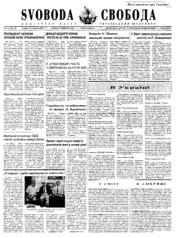
Svoboda-1995-180

DTIC ADA518756: Reforming Pentagon Decisionmaking
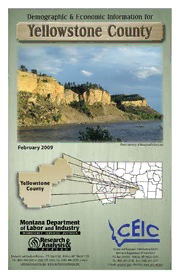
Demographic & economic information for Yellowstone County
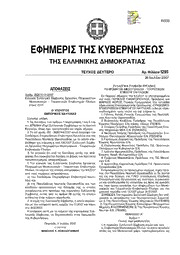
Greek Government Gazette: Part 2, 2007 no. 1295
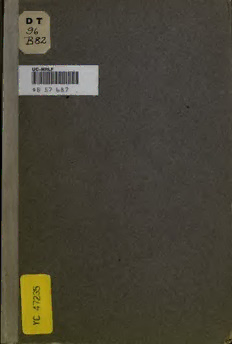
The treaty of Miṣr in Ṭabari: an essay in criticism
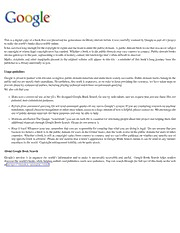
HLA-DQ transgenic NOD models of autoimmunity

Ama-Porter
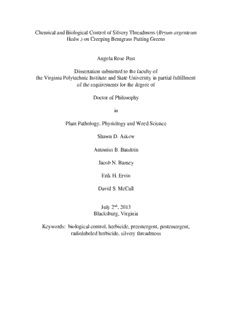
(Bryum argenteum Hedw.) on Creeping Bentgrass Putting Greens Angela Rose P

Ecología

Bertolt Brecht : Homme pour homme
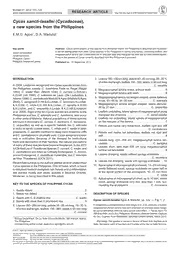
Cycas sancti-lasallei (Cycadaceae), a new species from the Philippines

Pedro Figari 2006 El Crimen De La Calle Chana
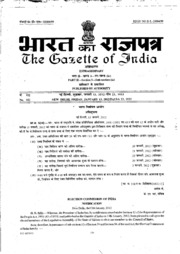
Extraordinary Gazette of India, 2012, No. 685

Wartburg Trumpet, vol. 87, no. 13 (January 11, 1993)
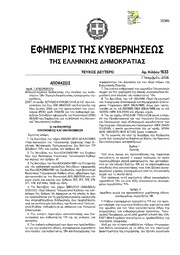
Greek Government Gazette: Part 2, 2006 no. 1633
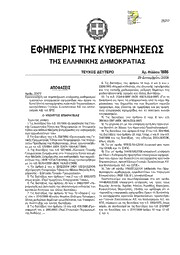
Greek Government Gazette: Part 2, 2006 no. 1886

Achtung-Panzer!

